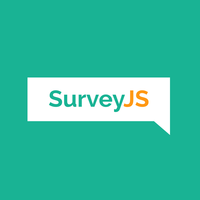kubernetes-json-schema
mermaid

| kubernetes-json-schema | mermaid | |
|---|---|---|
| 4 | 123 | |
| 292 | 67,034 | |
| 1.0% | 1.3% | |
| 0.0 | 10.0 | |
| 10 months ago | 6 days ago | |
| JavaScript | ||
| GNU General Public License v3.0 or later | MIT License |
Stars - the number of stars that a project has on GitHub. Growth - month over month growth in stars.
Activity is a relative number indicating how actively a project is being developed. Recent commits have higher weight than older ones.
For example, an activity of 9.0 indicates that a project is amongst the top 10% of the most actively developed projects that we are tracking.
kubernetes-json-schema
-
WebAssembly: Docker Without Containers
Hey, so I thought I remembered your username. This isn’t the first interaction we’ve had, or I’ve seen you have, that follows this similar pattern. In fact it’s the third example from you under this post!
It’s not a particularly pleasant experience to discuss anything with you, as after you make a particularly vapid and usually ice-cold take that is rebuffed, you seem to just try to make snarky replies rather than engage.
Understand that if you post your takes here they may be discussed and challenged, and if you don’t want this then I would refrain from initially commenting.
In response to your comment: They do. All Kubernetes resources are typed with JSON-schema definitions. Because of course they are, how else would kubernetes validate anything. https://kubernetesjsonschema.dev/
Anyone who’s used k8s at all knows this, if only from the error messages. From this you get autocompletion and a wide ecosystem of gui configuration tools. I like lens (https://k8slens.dev/).
-
Data and System Visualization Tools That Will Boost Your Productivity
To avoid spending unreasonable amount of time trying to find that one wrong indent, I recommend you use schema validation and let your IDE do all the work. You can use validation schemas from https://schemastore.org/json or custom schemas such as these for Kubernetes to validate your files. These will work both with JetBrains products (e.g. Pycharm, IntelliJ) as well as VSCode (see this guide)
-
Test manifest compatibility against version
Seems like they haven't generated v1.20+ schema. It might work if you generate the schema yourself and feed it to KUBEVAL_SCHEMA_LOCATION
-
A Deep Dive Into Kubernetes Schema Validation
Kubeval - instrumenta/kubernetes-json-schema (last commit: 133f848 on April 29, 2020)
mermaid
-
AsciidocFX: The Asciidoc Editor for documentation and authoring
Mermaid Diagram - Create diagrams using text and code
-
Creating Animated Diagrams for LinkedIn
Mermaid - https://mermaid.js.org/
-
ChatCraft Adventures #13, UI Changes
This is an Issue I opened up for a potential feature. A couple weeks ago, I added nomnoml support to ChatCraft. ChatCraft renders previews for Mermaid and Nomnoml.
-
Building a Mermaid.js Gantt Chart in a FileMaker Web Viewer
Mermaid JS is a powerful JavaScript library that allows developers to create complex diagrams and visualizations using simple text and code syntax. It’s a lot like markdown, but for charts instead of plain text.
-
ChatCraft Adventures #10
Currently, ChatCraft supports Mermaid rendering. This feature request involves adding support for nomnoml rendering. Nomnoml is similar to Mermaid, in that they're both used in generating uml diagrams.
- Ask HN: Anyone use a code to mindmap/flowchart tool?
- Mermaid: Generation of diagrams like flowcharts or sequence diagrams from text
-
Show HN: Marimo – an open-source reactive notebook for Python
Marimo looks and feels great!
Have you considered adding support for mermaid.js in the markdown? I tried including some mermaid.js in a `mo.md` invocation, but it didn't render the diagram :-)
https://mermaid.js.org/
-
Penrose – Penrose
This feels like the LaTeX version of Mermaid.js [0]. I can do anything with it, but I gotta learn a lot of new syntax. So, really cool! Gonna have to dig into this.
[0] https://mermaid.js.org/
- Mermaid: Diagramming and Charting Tool
What are some alternatives?
kubeconform - A FAST Kubernetes manifests validator, with support for Custom Resources!
plantuml - Generate diagrams from textual description
enhancements - Enhancements tracking repo for Kubernetes
C4-PlantUML - C4-PlantUML combines the benefits of PlantUML and the C4 model for providing a simple way of describing and communicate software architectures
kubeval - Validate your Kubernetes configuration files, supports multiple Kubernetes versions
aws-icons-for-plantuml - PlantUML sprites, macros, and other includes for Amazon Web Services services and resources
lens-resource-map-extension - Lens - The Kubernetes IDE extension that displays Kubernetes resources and their relations as a force graph.
draw.io - draw.io is a JavaScript, client-side editor for general diagramming.
kubernetes-json-schema - JSON Schemas for every version of every object in every version of Kubernetes
d2 - D2 is a modern diagram scripting language that turns text to diagrams.
kubernetes-schema-validation - resources for the blog post about Kubernetes schema validation
excalidraw - Virtual whiteboard for sketching hand-drawn like diagrams
